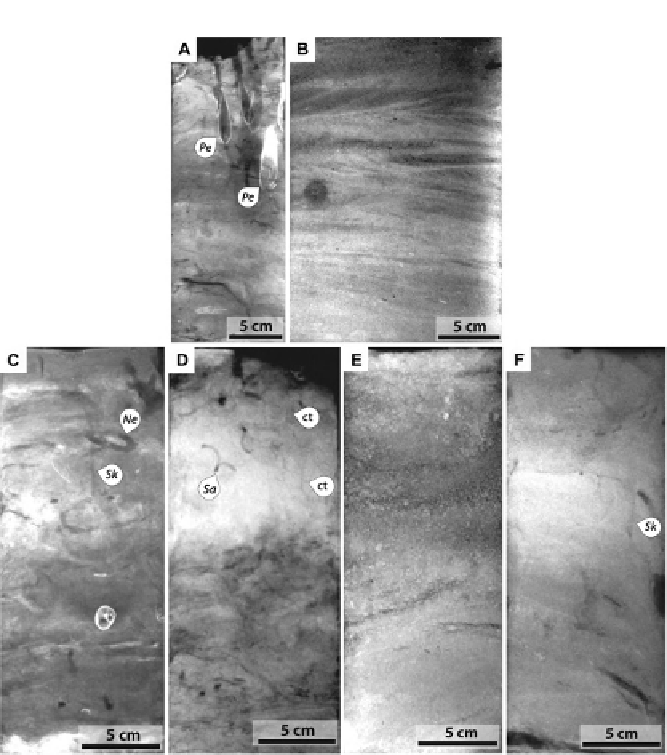Environmental Engineering Reference
In-Depth Information
FIGURE 6
X-radiographs of modern estuary deposits in Kouchibouguac Bay, New Brunswick,
Canada. (A) The
Gastrochaeonlites
-shaped traces are associated with salt-marsh (bay-margin) firm-
grounds. The tracemaker is
Petricola pholadiformis
(
Pe)
. (B) Herringbone cross-lamination in a
tidal-inlet deposit. (C) Nereid polychaetes (ne) contribute to the emplacement of
Skolithos
,
Polykladichnus
, and
Palaeophycus
in otherwise bioturbated middle estuary deposits. (D) Highly
burrowed middle estuary with
Saccoglossus
(
Sa
) and capitellid burrows indicated. (E) Cross-bedded
sand from a fluvial influenced inner estuary channel. (F) Burrowed bar top (
Arenicolites
and
Skolithos
visible) from the inner estuary.
central basin and the ocean or seaway. Higher tidal energies induce an increased
hydraulic exchange between the bay and the open ocean, such that barriers
across the mouth of the estuary are dissected by tidal inlets.
Within mixed-energy estuaries, the increased importance of tidal processes
can have the effect of substantially attenuating the salinity within the inner and
middle estuary. Sedimentological and ichnological characteristics are, there-
fore, spread over larger geographical zones, particularly parallel to the axis









Search WWH ::

Custom Search